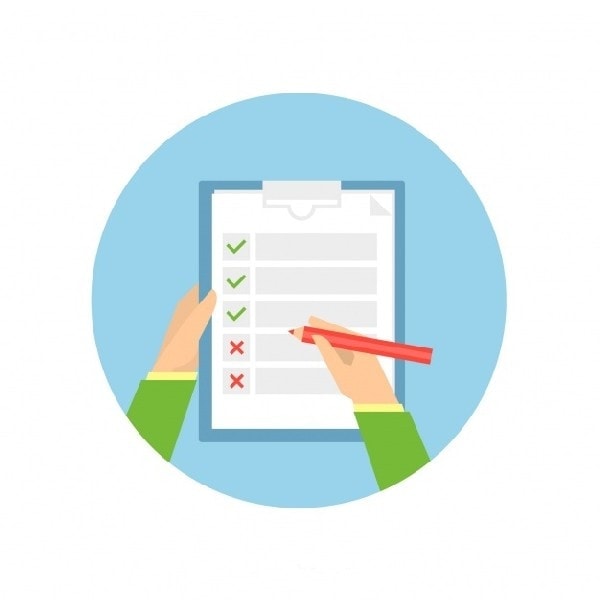While conducting research, it should be ensured that the proper techniques and tools of research should be used. Only with the help of proper tools, the research can be conducted. If improper research technique are used, then the results and inferences may not be correct because research technique affect the research itself.
Apt research technique lead to gathering useful market data and intelligence, the analysis of which can provide quite useful insights. Using a proper technique will not only affect the research but also affect the entire process including data collection and data analysis. In some cases of a combination of research, techniques may be used in order to reduce mistakes as well as the inconsistencies in the project.
The mixed-mode data collection is a technique used when there is a requirement of multiple Data collection techniques. All the collection techniques have some weaknesses and some strengths and if you devote enough time to selecting the proper technique then it was a minute the mistakes which might happen during the analysis and measurement stage.
The following is a review of the research technique which are widely used by many researchers all over the world.
Table of Contents
1. Surveys Study Sampling Methods
In the case of surveys, respondents answer questions and answers are recorded on electronic or paper questionnaire. The role of the interviewer in research is limited to distributing questionnaires after recruiting the interviewees.
The respondents respond to the questions asked which are then collected back by the researcher. With the help of a survey, the interviewer is able to gather information regarding the profile of the user and his opinion regarding the product or service.
It is tried to collect both qualitative and quantitative information. Earlier surveys were conducted face to face only and a physical questionnaire was provided to the participants and that questionnaire was then later collected and analyzed in order to carry out the further research process.
But nowadays as digital media has expanded and it is convenient to carry out surveys with the help of digital media. websites like SurveyMonkey and Google sheets are made it easier to reach people from different causes of the world and collect their responses at a click of a button. Disconnected responses can also be analyzed quickly.
Previously where paper used to be manually audited and the responses were grouped manually. Because of this, the time of analysis has drastically reduced and there is quick availability of results. The results can be analyzed using more tools like MS Excel and SPSS started giving advanced insights into the collected feedbacks. Sometimes the surveys and questionnaires may also be used in combination with other techniques in order to gain better insight.
Surveys often involve questions to which the respondents respond. These questions may be open ended, semi open ended and closed ended questions.
1. Open-ended questions methods
When the research is descriptive, then open-ended questions will be very helpful because the can get long answers from the respondents. Usually, open-ended questions start with “why” or “why do you think” type. Open-ended questions are intended to get a longer response from the respondent and also so find his psychological inclination towards the question and overall survey.
Examples of open-ended questions:
- What is your opinion on this?
- Why do you think it should not be done or it should be done?
- Describe your experience about a particular incident.
2. Close-ended questions
Close ended questions are used only when the intention of weathering the response to collect yes or no. Even in case, I need to rate a particular service or product then close-ended questions may be used. Close-ended questions are also used when there is going to be a detailed analysis of the survey and reports that are collected from the respondent.
The options that are provided are in such a way that they narrow down the response from the respondent without collecting any extra information. Respondent is given a selected set of choices from which he has to choose. Close-ended questions may also be where the responses not more than one or two words.
Examples of close-ended questions
- Do you agree with the hypothesis? answer in yes or no.
- On the scale of 1 to 5 how would you rate the restaurant 1 being the best and 5 being the worst.
- Which of the following would be your colour of choice? Red, yellow, green or blue.
- Which city did you grow up in?
- What is your age?
3. Semi open-ended questions
These are also termed as semi close-ended questions or mixed questions. In these questions, although the response is narrow and the options are limited, there is the last option that may help the respondent to elaborate on his response.
The last option may be kept as an open-ended answer where the respondent can answer something which is not covered in the options of the question. This is done so that the researcher does not miss anything about the respondent.
Sometimes it so happens that the research is unaware of a lot of things and these new things make up during is the survey. To have a space for it, a last open-ended option is introduced.
For example, how was your experience? Options – Good, Bad, Neutral, Other (explain in detail)
As you can see the last option is kept as an open and write answer wherein the respondent can select and reply in detail.
2. Site/field visit
When the survey is to be conducted by visiting the field or side, then it is called a field visit or site visit. In these cases sometimes even for observation of the candidates, the researcher may be required to visit the field and take up the observation.
Field visits are to be conducted in person but due to technology even a camera that highlights or records the subjects can be used for a field visit. In some cases, the interviewer may also conduct an interview with the respondents and fill up the questionnaire.
Questionnaires can be into many categories like online or paper-based. Usually, the respondents together in a single room and their questions which are compared by the researcher all presented to them. Although many times attempt is made to observe the user in his natural environment so that external factors will not affect the outcome of the research.
The intrusion of external factors is kept to a minimum in order to avoid the negative effects on the results and conclusion of the research.
3. Inquiries Methods
the inquiry is also classified under a research techniques which is a combination of an interview with observation. Participants are made to think aloud as they answer the questions so that the researcher can get a glimpse and proper insights and understanding about their participants.
The primary advantage of inquiries is that the participants can be observed and inquiry can be made in their natural setting but on the other hand the limitation of inquiry is that there may be the researcher bias involved in the analysis and outcome of the inquiry report.
Inquiries can also be made by calling the respondents to a certain location but that would defeat the purpose of the enquiry of understanding the respondents in their natural setting. The inquiries, when coupled with a proper questionnaire, can give good results as long as the analysis is done without any bias.
4. Focus Groups
A focus group is classified under a qualitative research techniques in which many individuals from different backgrounds are called in one place and asked on their beliefs, opinions, perceptions, and attitudes. Focus groups are also called as focus groups interviews because the researcher takes interviews of the respondents.
Usually, the moderator is involved in the participant’s discussions who know everything about the subject but does not interrupt the discussion in order to understand the natural flow of the participants. Participants are encouraged to talk freely and voice out their opinions and believes so that the observer can get a deep understanding and insight into the psychology of the participants.
The participants are chosen very carefully so that they represent at least one group or community. Different tests that can be used in focus group interviews include sentence completion tests, group discussions, personification, and other such things. Such discussions also provide new views which the company may not have considered before.
Sometimes the observer stands remotely without the knowledge of the participants so that the participant can talk more freely without knowing that they are being observed. At other times the participants may be involved with the moderator. There may also be video recordings of participants discussing the topic which can be observed later on by multiple observers and share their views.
The advantage of a Focus group is that representatives of the population or community can be called one place creating a diverse but controlled number of participants and this itself can turn out to be a disadvantage because individual responses may vary even a single community.
Questionnaires are designed for focus group interviews also but there may not be any questionnaires for focus group discussions. Although in such cases follow up questions may also be presented to the participants after completing the discussions. focus group interviews are used by many companies before the launch of their product in order to understand the views of the customers.
5. Interviews
When there are guided conversations in which one person attempts to seek as much information as possible from the other person that is called as interviews. Interviews may be conducted by visiting the participant or by calling him in one place.
The only difference between interviews and focus group interviews is that in focus group interviews, there are multiple participants at one time. But in the case of interviews, the conversations are usually carried out one on one. An interview is called structured when the questions are prepared in advance and the researcher tries to get all the questions answered from the respondent.
On the other hand and interview is called non-structured if the questions are not prepared by the researcher and the questions start emerging as the discussion proceeds based on the answer of the respondent. In both cases, it is ensured that there is a flow of the questions and the ultimate aim for finding out the answer to the questions is predetermined.
Nowadays interviews can also be conducted by phone but the more effective way would be in person or by video or conference calls. The interviews may be conducted directly with the respondent or with the person who knows the respondent in order to gain a better understanding of the person.
Usually conducted interview requires a detailed plan about the process of conducting an interview and the flow in which the interview is to be conducted.
6. Brainstorming
Brainstorming is a method that is used for generating ideas. it is considered as a group creativity technique in which efforts are made in order to arrive at a conclusion that is caused by a specific problem by gathering ideas. Brainstorming is classified as a situation where multiple people generate multiple ideas and solutions for a problem by removing all of their indications and thoughts.
All of the ideas which are generated during brainstorming are noted down irrespective of their correctness and after the session is over the collected ideas are evaluated one by one. When brainstorming was generated by Alex Osborn, he classified the following steps to be carried out for a successful brainstorming session.
1) Quantity first
This means that the focus should be on a number of solutions. the name of the session should be to generate as many solutions as possible because the maximum quantity will yield quality.
The assumption clearly states that more the number of ideas more possible will be a chance of producing a better and radical solution. this is the reason why the participants are encouraged to provide the more possible number of solutions so that one of them can be used as a final solution.
2) No criticism methodology
In the sessions of brainstorming many of the ideas that are generated would seem irrelevant. there should be taken that all of the ideas that are generated should we put down on paper rather than passing the judgment immediately.
By the absence of judgment, the participants will be free to voice out their solutions and there will be many participants delivering their opinions more than once. many alternatives and possible solutions are debated and discussed in a session of brainstorming this is why many solutions are noted down.
3) Out of the box ideas
In order to motivate other participants who may not speak out of the box ideas are welcome. this will encourage others to come up with different and creative ideas that may not be thought of. not all of the ideas would be relevant but sure some of them would be relevant.
4) Improvement by combination
Many of the ideas that are provided may be raw and it is up to the moderator of the session of brainstorming who can combine the ideas and improve them.
7. Gamestorming
As the name suggests gamestorming is the use of games for the purpose of brainstorming. the name game starting itself is a combination of game and brainstorming. the problem is usually presented in the format of a game to the participants and the participants are encouraged to think creatively and free of all inhibitions and protocol.
For example, if the ultimate goal of the business is to find the primary feature of the product then the gamestorming game may involve each of the participants accompanying with a limited set of features or specifications which will allow them to bite or buy on different features and see which one is on top.
8. Web Analytics
In the case of web analytics, the consumer data is gathered analyst in order to game insights into the attitudes and actions of the customer. Many tools available online such as Google web analytics which make it possible for companies to work on real-time data and form the usage patterns to optimize the experience for the end-user.
Web analytics can also be combined with gamification where buy bye we can come to know about the impact on their behaviour and we can adjust and optimize the strategy as required.
9. A/B testing
This is termed as an experimental approach in which there are two versions of a website. The option a and option b are used in order to another is the behaviour methods of the user. Usually, it makes an effort to track the differences and their effects on the user between the two options.
These differences can be analyzed and the reaction of the user for these differences can also be measured and recorded. the recorded user experience collected by the company and the data are analyzed so that there can be necessary changes made in order to improve the user experience.
AB testing is consistent and can be used in a better way than just to answer yes or no question which would settle a disagreement. The goal of AB testing is not to improve the single point but to improve the overall experience.
Small and one by one changes can be introduced in a b testing so that over time the entire collection of changes can result in a drastic change.
10. Playtesting
Playtesting is a process in which a new game is tested by the game designer in order to find a design clause or bugs which could be present in the game before launching the game into the market. These playtests can be closed or open depending on the type of the game. In the case of open playtest anyone who wishes to join can join the game in order to test it.
Sometimes different game designers may be recorded in order to test the game. In the case of closed playtest the testing is done internally and would not be available for the public. There is also a third form of playtesting which is termed beta testing which is the testing of final stages just before the launching of product in the market and maybe with a limited form of the game in order to detect any last moment problems if present.
A non-disclosure agreement may be signed for all of the forms of playtesting by the participants.
Thank you for reading our article about research methods.
Liked this post? Check out the complete series on Market research






Good Discussion
This article is very very good for me in seeking marketing jobs. Thanks